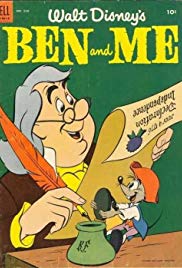Here is a list, probably incomplete, of all of the different ways in which Ben Franklin excelled.
Franklin the Scientist:
Franklin was the first person to accurately describe the way in which electricity worked. He introduced the terms “plus” and “minus,” “positive” and “negative,” “charge,” and “battery.” Franklin proposed the concept of a single “fluid” of electricity and was the first to explain the principle of conservation of charge. He accurately predicted the outcome of manipulations of electrostatics, such as the production of electric charges in objects and the transfer of that charge. Franklin discovered that lightning was a form of electricity. He also found that pointed instruments take on and discharge electricity more efficiently than blunt instruments. From these observations, Franklin invented the lightning rod which protects buildings and other structures from the effects of a lightning strike by conducting the electrical energy of the strike into the ground. (For a description of thunder and lightning see Learning Guide to The Sound of Music.) Franklin’s articles on electricity were published in the leading scientific journal of the time. He was the first American recognized as a great scientist. For his work in electricity, Franklin was elected to England’s Royal Society, the preeminent scientific organization of its day. He was one of only eight non-Englishmen so honored during the period in which he lived.
While his pioneering work in electricity was his foremost scientific achievement, Franklin was active in many other areas of science. He contributed to the knowledge of the Gulf Stream, publishing the first map showing its course. Franklin made discoveries concerning atmospheric convection currents, the direction of the motion of storms, cloud formation, and the electrification of clouds. Franklin wrote on many medical issues, such as lead poisoning, gout, deafness, and infection from dead bodies. Franklin initially opposed inoculation but later changed his mind and wrote a statistical survey supporting it. Franklin founded the American Philosophical Society, the first permanent scientific organization in the New World.
Franklin the Inventor:
Franklin was not just a theoretical scientist. He was able to turn his scientific and everyday observations to practical use, creating inventions which are still used today. A few are set out below:
- bifocals; the Franklin Stove; the lightning rod; the rocking chair; a flexible catheter; the harmonica.
Franklin also conceived of the idea of daylight saving time. Franklin designed and built the machines on which his scientific experiments were performed. It was said that Franklin had “both a head to conceive” and a “hand to carry into execution” whatever may illuminate the subject of his interests.
Ben Franklin did not apply for a patent for his lightning rod or for his stove, or, so far as we know, for any device that he invented. While he was not wealthy he was well off and would never have to work again. He therefore felt that he owed it to society to permit these inventions to be distributed without paying him a royalty.
Franklin the Patriot:
Franklin, once he became convinced that independence was the necessary, became a ferocious advocate for American independence from Great Britain. He was instrumental in convincing the Second Continental Congress to declare open revolt against Great Britain. (See Learning Guide to 1776). Franklin helped to write, and was a signatory to, the Declaration of Independence. (Franklin understood the seriousness of revolution, reminding his cosignatories that if Great Britain won the war: “We must all hang together, or we shall surely all hang separately.”) Franklin was also a member of the Constitutional Convention. He was Ambassador to France and emissary to Great Britain, helping to negotiate the treaty which established independence for the United States.
Franklin the Author:
Franklin was the author of many pamphlets and articles. He wrote The Autobiography of Benjamin Franklin and Poor Richard’s Almanac.
Franklin the Public Servant:
In addition to his service as a diplomat, member of the Continental Congresses and member of the Constitutional Convention, Franklin served in various public offices. He was the first Post Master General of the United States. He served as Clerk of the Pennsylvania Assembly for many years.
Franklin the Public Spirited Citizen:
Franklin helped establish important public institutions for the City of Philadelphia, including a fire company, a library, an insurance company, a school (later to become the University of Pennsylvania), a hospital and a scientific society. In some cases these institutions were the first of their kind in North America.
Franklin the Musician:
Franklin loved music and loved to play it. He invented the armonica, a musical instrument consisting of a series of glass hemispheres mounted on a horizontal rod on which they could be spun, creating musical tones. Franklin’s armonica was popular in the late 18th and in the 19th centuries. Mozart and Beethoven, among others, composed music for it.
Franklin the Athlete:
Until old age, Franklin was physically active. Swimming was his favorite exercise. He favored getting out into the fresh air.


